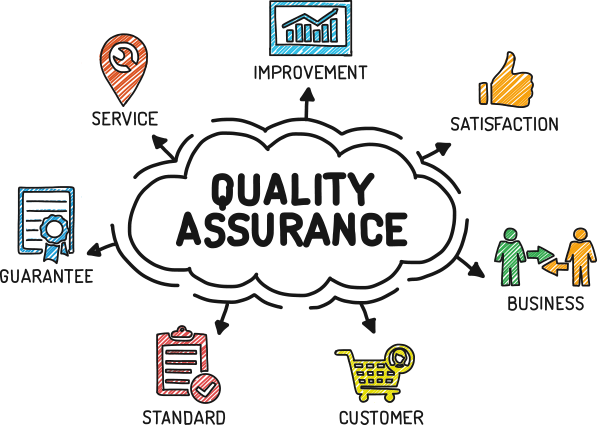Welcome to a
Journey where Software Excellence is not just a destination but a way of life. In
this Blog, we embark on an exploration of Quality Assurance (QA) that transcends
the ordinary. Join us as we dive into the realm of QA, unlocking its hidden
potential to elevate software development to new heights. Prepare to witness
the transformative power of QA as we unravel its unique aspects, best practices,
and cutting-edge approaches
"The ultimate goal of QA is to make the customer's life as easy as possible." - Jeff Van Fleet
The Symphony of Quality Assurance:
QA, often underestimated, conducts a symphony that harmonizes the various elements of software development. From inception to deployment and beyond, QA orchestrates a melody of meticulousness, precision, and innovation. Discover how QA shapes the destiny of software by infusing it with unrivaled quality, reliability, and user satisfaction
Unveiling Unconventional QA Strategies:
a. Risk-Based Testing: In a world of limited time and resources, prioritizing
tests based on risk empowers QA teams to focus on critical areas. By
identifying high-risk components and allocating testing efforts accordingly,
organizations achieve a fine balance between thoroughness and efficiency.
b. Exploratory Testing: Embracing the art of exploration, QA professionals venture
beyond scripted scenarios to discover hidden defects and usability challenges.
By leveraging intuition, creativity, and adaptability, exploratory testing
reveals valuable insights that scripted tests often overlook.
c. Shift-Right Testing: While traditional QA efforts typically end with product
release, shift-right testing challenges this convention. By extending testing
into production, organizations can proactively monitor and gather feedback from
real-world usage, enabling continuous improvement and rapid bug resolution

Mastering the QA Craft:
- Test-Driven Development (TDD): Break free from the shackles of defects with TDD. By writing tests before writing code, developers ensure that the software adheres to predefined requirements and functions flawlessly. TDD instills discipline, promotes collaboration, and accelerates development cycles.
- Usability Testing: Good software not only functions flawlessly but also provides a delightful user experience. Usability testing focuses on understanding user behavior, preferences, and pain points, leading to intuitive interfaces and enhanced user satisfaction.
- Performance Engineering: Beyond functional correctness lies the realm of performance engineering. By analyzing and optimizing software performance, organizations can deliver lightning-fast applications that surpass user expectations
“Quality is everyone’s responsibility.” – W. Edwards Deming
QA In the Era of Innovation
Embrace the disruptive potential of AI and ML in QA practices. From intelligent test automation to anomaly detection, these technologies supercharge QA efforts, making them more accurate, efficient, and adaptive.
